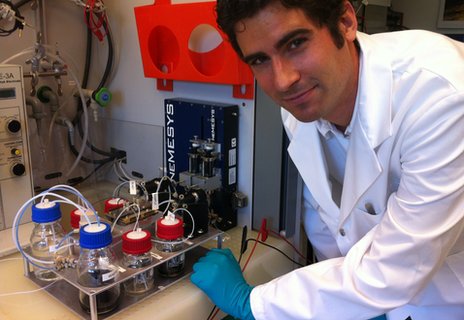
IBM has unveiled a prototype of a new brain-inspired computer powered and cooled by what the company is calling “electronic blood.”
The company says it is learning from nature in an effort to develop small, highly efficient computing systems.
“We want to fit a supercomputer inside a sugar cube,” IBM researcher Bruno Michel, Ph.D., told the BBC. He and co-researcher Patrich Ruch, Ph.D. demonstrated a basic model of their new prototype at IBM’s laboratory in Zürich, Switzerland this week. “To do that, we need a paradigm shift in electronics—we need to be motivated by our brain.”
“The human brain is 10,000 times more dense and efficient than any computer today.”
An adult human brain consumes approximately 20 watts of energy and uses less than half of its volume for functional performance, while some of today’s supercomputers consume more than 300,000 times the amount of energy and devote 99 percent of their volume to power and cooling.
According to Michel, the human brain is able to consume energy at a low rate “because it uses only one—extremely efficient—network of capillaries and blood vessels to transport heat and energy—all at the same time.” The new IBM prototype computer emulates this concept using “redox flow” system, which pumps an electrolyte “blood” through the computer. The liquid is charged via electrodes and pushed into the computer, where it discharges energy to the processor chips and then carries heat away.
Ultimately, IBM hopes to shrink a one petaflop computer—which would fill half a football field today—down to the size of a standard desktop computer by 2060, and one day use its “electronic blood” concept to achieve zettascale computing.






